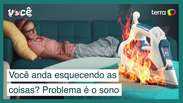Lack of knowledge about the disease has exposed patients to misdiagnosis and stigmatization
Summary
Laura Silva had Covid-19 in 2021 and developed chronic fatigue syndrome (ME/CFS) 6 months later. Research conducted by ICB-USP showed that the disease was observed in 10-20% of people who recovered from the virus. One study states that 13-45% of patients may develop the disease.
-
BY PARTICIPATING

Chronic fatigue syndrome affects more women and those who have had Covid or dengue
-
BY PARTICIPATING

Tanning pills work, but the cost is high
-
BY PARTICIPATING

Are you a little forgetful? The problem could be in your sleep
Educationist Laura Silva, 47, had a normal life until December 2021, when she contracted Covid-19. Since then her health has never been the same. Symptoms such as extreme tiredness, difficulty concentrating, intolerance to daily efforts and excessive drowsiness have become common in our routine. The fatigue, which began on the fourth day of symptoms, persisted. Six months after testing positive for Covid-19, the educator was diagnosed with myalgic encephalomyelitis, also known as chronic fatigue syndrome (ME/CFS), a still poorly diagnosed disease.
In Brazil, the Ministry of Health does not have data on how many people are living with the syndrome, although a study by the Institute of Biomedical Sciences of the University of São Paulo (ICB-USP), published in the journal Frontiers in Immunology in 2022, links the disease to the pandemic. Researchers showed that the condition was seen in around 10-20% of people who had recovered from Covid-19 but continued to have symptoms. Of the 80 patients who participated in the USP research with Covid-19, half developed chronic fatigue syndrome. Last year, a study published by the same publication estimated that 13% to 45% of patients who contracted the virus could develop the disease.
Until her condition was recognized, Laura Silva faced embarrassing situations at work, prejudice and misdiagnosis, which associated her symptoms with depression and anxiety. “The doctors said to take medicine, exercise and get on with your life,” she recalls. “I have enormous difficulty sitting still and sitting with my legs down. In an important meeting, for example, I had to isolate myself from the group, sitting with my legs raised. Before they fired me, they thought it was a ‘mania’ of mine,” she says.
Chronic fatigue syndrome is a disease for which there is no cure yet. The symptoms appear, in over 80% of cases, after a viral infection, being three times more common in the female population. Another alarming fact is that 91% of those affected in the United States are misdiagnosed with other conditions, such as depression.
The lack of information has exposed patients to stigmatization both in the job market and in their personal lives. It is common for symptoms to be downplayed or linked to psychological problems.
Professor of pulmonology at the Federal University of São Paulo (Unifesp), Eloara Campos, explains that many patients suffering from the syndrome end up being diagnosed with depression and anxiety. “Especially because it is not possible for a patient with a chronic illness not to develop anxiety or depression. Sometimes anxiety is a consequence, because the person has spent many years turning to doctors, specialists, tests and has never had an answer.”
Campos began diligently studying the disease during the Covid-19 pandemic, after receiving patients who had improved respiratory symptoms and lung complaints but remained fatigued. The Unifesp professor explains that approximately 25% of patients affected by the syndrome are confined to bed and 50% are no longer able to have a working and social life as before; Many even stop working.
In addition to having no cure, the disease does not have a biological marker that proves its existence, such as a glucose test that indicates whether the person is diabetic. The absence of this indicator makes work processes such as leave and retirement difficult. The diagnosis is clinical: tiredness for more than three months that does not improve with rest, worsening of symptoms after the slightest effort and non-restorative sleep.
Watch the video with commentary by André Forastieri.
Source: Public authority
André Forastieri is a journalist and entrepreneur, founder of Homework and the content and connections agency Compasso, as well as a mentor to professionals and executives. Find out more aboutandreforastieri.com.br
.
Source: Terra
Ben Stock is a lifestyle journalist and author at Gossipify. He writes about topics such as health, wellness, travel, food and home decor. He provides practical advice and inspiration to improve well-being, keeps readers up to date with latest lifestyle news and trends, known for his engaging writing style, in-depth analysis and unique perspectives.






![Un Si Grand Soleil Preview: Episode Summary for Tuesday, October 21, 2025 [SPOILERS] Un Si Grand Soleil Preview: Episode Summary for Tuesday, October 21, 2025 [SPOILERS]](https://fr.web.img4.acsta.net/img/c7/7f/c77f5c02e3632e8e611d5041c2b9f36e.jpg)

